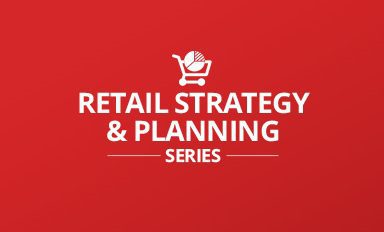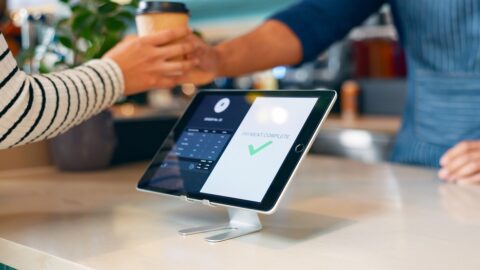Any retailer’s long-term health requires finding the right balance between acquiring and retaining customers — particularly the loyal and big-spending types of shoppers. But rapid changes in both consumer expectations and the competitive landscape have rewritten many of the established rules for customer acquisition and retention.
The 2018 Retail Strategy and Planning (RSP) webinar series, hosted by Retail TouchPoints, uncovered several new strategies for tackling these timeless challenges. Following are brief recaps of six webinars in the #RSP18 series, now available on-demand.
[Read a recap of the Holiday Predictions webinar, sponsored by Salesforce, here.]
Advertisement
Drive Repeat Purchases With Relevant Messaging
The average repeat customer spends 67% more in months 31 to 36 of their relationship with a retailer compared to the first six months, according to Bain & Co. And 82% of companies agree that retention is less expensive than acquisition. Yet brands still frequently fail to engage at key post-purchase stages using relevant messaging.
In the session, titled: The Payoff Of Post Purchase Engagement: Benchmarks & Best Practices For Driving Repeat Purchases, Andrew Gaffney, Editorial Director of Retail TouchPoints, and Eric Keating, VP of Marketing at Zaius, discussed how brands such as Sephora, Stitch Fix and Warby Parker develop emotional connections with their consumers.
“Understanding your customers really is a prerequisite to engineering the repeat purchase,” Keating said. “At a high level, you’re understanding their preferences, motivations and tendencies, and you can answer questions like, ‘What types of actions do they take across channels and devices? What are their personal preferences and demographics? Ultimately, how should you personalize your marketing to meet their individual needs?’”
Keating reminds retailers that three customer data points are a must-have for a successful retention campaign: demographic data, behavioral data and purchasing behavior.
With these data points in hand, driving repeat purchases should become a retailer’s top metric for measuring and evaluating the effectiveness of their marketing efforts.
Consolidated Hubs Make The Most Out Of Consumer Data
The average retailer deals with multiple siloed data points, which can make it difficult for businesses to turn information into results, according to Aaron Brennan, Senior Product Manager at RedPoint Global. Shoppers want a truly unique experience that is personally tailored to them, and they’re willing to walk away if they don’t receive it.
By bringing data together under a single customer engagement hub, however, retailers can better understand what shoppers want and quickly personalize their experience. Brennan shared several real-world examples highlighting retailers that saw significant performance improvements by using their data more efficiently during the session, titled: Leveraging Data To Optimize Customer Engagement:
- Xanterra increased the collaboration between its more than 100 data sources across 24 travel brands, resulting in a 91% year-over-year revenue improvement;
- Keurig updated how it makes recommendations based on shopper data points, which resulted in a 70% lift in conversions from carousel recommendations; and
- Screwfix optimized its data collection, leading to a 99% reduction in the time it takes to turn that data into tangible action.
“We’re really in the stage of the empowered customer these days,” said Brennan. “What that means is if the customers don’t get the journeys that they want to go on, they will ultimately leave you. Users’ expectations are that you will work with them to give them what they want during a customer journey.”
Content, Emotion And Experiences Create E-Commerce Success
Shopping has definitively changed from a transactional activity into an “emotional response to thoughtfully crafted, engaging, brand-defining experiences that spark positive customer responses,” according to Tracey Wallace, Editor-in-Chief of BigCommerce. For e-Commerce retailers, particularly those seeking to appeal to Millennials and Gen Z, Wallace provided five tips for creating success strategies during the session, titled: Converting The Top 5 E-Commerce Trends Into Revenue:
• Build Your Trust Funnel: Brands should use content to draw people in via an authentic story. “Content and commerce are inextricably linked.”
• Gratification (Instant or Otherwise): While Amazon has set high expectations about delivery, retailers can compete with a high-quality packaging/unboxing experience, as well as transparency about when products will arrive and what the returns process will involve.
• Take Advantage Of Channel Expansions: Retailers should optimize for the platforms competing with Amazon, such as Facebook Marketplace, Google Shopping and Shopping on Instagram.
• Offer An Experience-Driven Site: “Personalization is key to making shoppers feel something.” Zenni Optical, for example, has a tool on its site that allows shoppers to see how eyewear will look on their face.
• Mobile, Mobile, Mobile: Speed and simplicity are critical on mobile devices: “Your mobile site speed can affect your Google search ranking. It matters to them because it matters to a lot of consumers.” She recommended reducing the number of clicks required to check out. To achieve this goal, retailers could set up e home pages or product pages to double as checkout pages.
Map The Customer Journey To Differentiate The Shopper Experience
As the modern customer journey transforms from a linear experience to one that takes the shopper from channel to channel, retailers must create an experience that truly stands out.
In the session, titled: Customer Journey Mapping 2.0: Best Practices For Creating Differentiated Experiences, Terri Pucin, Senior Consultant at FitForCommerce, chatted with Andrew Gaffney, Editorial Director of Retail TouchPoints, about the role journey mapping plays in today’s retail environment.
Journey mapping is designed to help identify gaps and pinpoint areas in the customer experience that are disjointed or painful. Retailers can use the technique to develop new marketing plans, select quality vendors or even build a new site.
“Externally, for your customer, what you give them is a differentiated, relevant site and store experience that will bring your customer back to you time and time again,” Pucin said. “You also benefit internally, with a cohesive strategy that delivers a consistent experience across all touch points. [Journey mapping can drive] organizational buy-in with a team that is working from the same playbook.”
Differentiated experiences meet customer needs in five critical stages of today’s typical shopper journey, according to Pucin:
- Discovery;
- Consideration;
- Purchase;
- Use/service; and
- Loyalty.
Combine The Best Of In-Store And Online To Optimize Omnichannel
While e-Commerce sales growth is outpacing physical channel growth, brick-and-mortar stores still offer shoppers an experience that can’t be replicated online. Chris Benner, Senior Industry Principal at Oracle NetSuite, discussed keys to omnichannel success in a session, titled: Optimizing The Omnichannel Journey.
To ensure they make the most of both their web site and stores, retailers must make the shopper journey seamless — regardless of its starting point. For instance, the research benefits of shopping online can be replicated in-store, while the convenience of in-store returns can offer shoppers reassurance for their e-Commerce purchases:
- 78% of shoppers want access to reviews and ratings in store;
- 42% of shoppers want to return items to a nearby store; and
- 49% of retailers accept returns of online orders in store.
“It might look a little bit different now than it did 10 or 15 years ago, and it’s probably going to look a little bit different a few years from now, but the bottom line is, from a retailer’s perspective we’ve got to be able to satisfy that customer whether they’re walking into a store or they’re holding a mobile device,” said Brenner. “Whatever way they want to interact with us as retailers, we need to meet them there.”
Mobile Data Adds New Dimension To Location-Based Customer Analysis
While retailers have many data sources to map trade areas and other key store performance drivers, the recent availability of large amounts of mobile data adds the critical element of time to the equation. “Retailers are getting excited about the availability of human movement data, including where people go during the day and where they work, play and shop,” said Gary Sankary, Industry Marketing Strategy, Esri. “By adding a temporal factor, it helps retailers understand who their customers are likely to be at a given time of day.”
Having “time-stamped” location data about consumers is vital to developing site models, since the “first goal of these is to predict customer behavior,” said Joe Whitley, Senior Analytic Consultant for Environics Analytics. Whitley and Sankary spoke during the session, titled: Location Intelligence — A Critical Tool In Retail Performance Management.
In addition to site models, Spatial Interaction Models (SIMS) are powerful predictive tools that can be used for scenario-building. They include the interactions of four measurable elements, Whitley explained:
• Potential: The total dollars that could be spent in a specific geography for a product or service;
• Attractiveness of a specific store location: This can be affected by the store’s size, merchandise offering, signage, visibility, accessibility and overall perception of the brand;
• Distance: The likelihood that consumers are willing to travel to the store from home or work (mobile data is used extensively in calculating this element); and
• Affinity: Customer preferences for this brand over other options.









